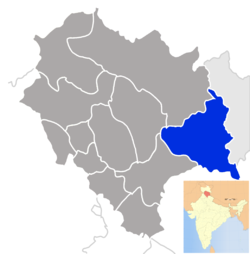In the district, horticulture crops occupy a relatively high proportion of gross cropped area, raising the economic viability of solar pumps here. Overall, water availability for irrigation in the district (based on ground water development and long-term trends of water level decline) is within the safe limit, enhancing long-term sustainability of solar pumps. The average monthly per capita expenditure of rural agricultural households is relatively high for the district, suggesting higher purchasing capacity of the farmers here. The district has a relatively high penetration of banks in rural and semi-rural areas, facilitating higher access to institutional credit for farmers.
Deployment Approaches
| Approaches | Feasibility |
|---|---|
| Individually owned off-grid solar pumps | Limited Suitability |
| Solarisation of feeders | Not Suitable |
| Solar based water as a service | Limited Suitability |
| Promote 1 HP and sub-HP pumps | Limited Suitability |
| Solarisation of individual grid-connected pumps | Not suitable |
Individually owned off-grid solar pumps
Limited Suitability
The district has ground water available within the safe limit and a relatively high disbursement of institutional credit. But, low crop revenue per holding, and a comparatively low concentration of diesel pump users make it difficult to promote the private ownership of solar pumps here.
| Parameter | Value | Percentile |
|---|---|---|
| Number of cultivators reporting use of diesel pumps | 0 | 0 |
| Water Availability Index | 1 | 100 |
| Crop revenue per holding (INR) | 9,924 | 3 |
| Medium and long term institutional credit disbursed in a year (in INR Crore) | 48.4 | 58 |
Solarisation of feeders
Not Suitable
The district has a relatively low penetration of electric pumps, a rather low cost of power supply for the respective DISCOM and a comparatively low extent of feeder segregation, making it very difficult to solarise the feeders here.
| Parameter | Value | Percentile |
|---|---|---|
| Actual cost of power supply (INR/kWh) | 5.22 | 18 |
| Extent of feeder segregation | ||
| Proportion of cultivators reporting use of electric pumps | 0% | 0 |
Solar based water as a service
Limited Suitability
Groundwater availability in the district is within the safe limit. But, a rather low concentration of small and marginal farmers and a relatively low proportion of unirrigated area make it difficult to promote solar-based irrigation through the water-as-a-service model here.
| Parameter | Value | Percentile |
|---|---|---|
| Water Availability Index | 1 | 100 |
| Proportion of small and marginal cultivators | 81% | 40 |
| Unirrigated net sown area as a share of total net sown area | 26% | 26 |
Promote 1 HP and sub-HP pumps
Limited Suitability
The district has a relatively high proportion of horticulture crops under gross cropped area, groundwater availability within the safe limit and a comparatively high disbursement of institutional credit to marginal farmers. But, the proportion of marginal farmers is rather low in the district, suggesting low demand for small-sized pumps.
| Parameter | Value | Percentile |
|---|---|---|
| Area under horticulture crops as a share of gross cropped area | 68% | 97 |
| Water Availability Index | 1 | 100 |
| Proportion of marginal cultivators | 58% | 41 |
| Medium and long term institutional credit disbursed in a year (in INR Crore) | 48.4 | 58 |
Solarisation of individual grid-connected pumps
Not suitable
The district has ground water available within the safe limits. But a relatively low penetration of electric pumps, a relatively low power subsidy for agricultural consumers and a comparatively low extent of feeder segregation, making it very difficult to solarise individual grid-connected pumps here.
| Parameter | Value | Percentile |
|---|---|---|
| Water Availability Index | 1 | 100 |
| Actual cost of power supply (INR/kWh) | 5.22 | 18 |
| Extent of feeder segregation |
Leveraging Solar Pumps to Promote Policy Objectives
If you are deploying solar pumps in this district then you can further these policy objectives.
National Mission on Oilseeds and Oil Palm (NMOOP)
The relatively low share of oilseeds and oil palm crops under gross sown area in the district makes it a suitable candidate for promoting NMOOP. Solar pumps could meet irrigation needs for these crops and help farmers diversify their yields beyond cereals.
| Parameter | Value | Percentile |
|---|---|---|
| Area under oilseeds as a share of total cropped area | 0 |
Sub-Mission on Agricultural Mechanisation – Farm Power Availability
There is a comparatively low level of farm mechanisation in the district and a relatively low proportion of electric pump users, indicating an opportunity to increase the exisiting level of mechanisation through solar based irrigation. Solar powered irrigation could be deployed under the Sub-Mission on Agricultural Mechanisation to improve farm power availability.
| Parameter | Value | Percentile |
|---|---|---|
| Level of farm mechanisation (tractors, harvesters, threshers per ha) | 0 | 0 |
| Proportion of cultivators reporting use of electric pumps | 0% | 0 |
Per Drop More Crop
In the district, crops suitable for drip and sprinkler irrigation occupy a relatively high proportion of gross cropped area, making it easy to adopt such high precision irrigation methods. Solar pumps, along with other efficient and precise water application devices, could be deployed under Per Drop More Crop to promote efficient irrigation.
| Parameter | Value | Percentile |
|---|---|---|
| Area under crops suitable for drip and sprinkler irrigation as a share of total cropped area | 68% | 94 |


